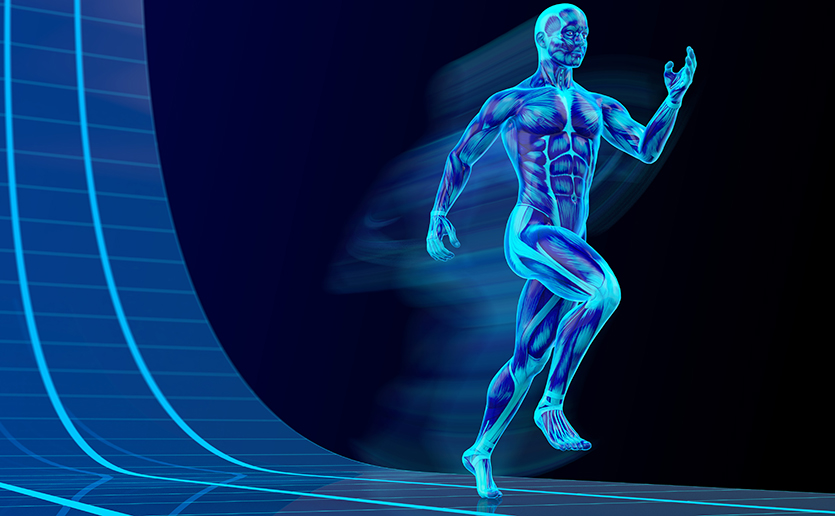Whether repairing the anterior cruciate ligament (ACL) of a world-class athlete or helping a first-time marathoner overcome a sedentary lifestyle, high-quality sports medicine clinics administer the same basic approach: close attention to the details of a thorough patient history, framed by a holistic imperative to integrate all aspects of the patient’s lifestyle and athletic ambitions into the treatment plan. That empathetic mindset is at the core of healing from sports injuries, according to Mark D. Price, MD, PhD, orthopaedic surgeon in the Sports Medicine Center at Massachusetts General Hospital.
“For all athletes, we really do preach a more holistic approach to everything going on and that you can’t just focus on the injured limb.”
Now the head team physician and medical director for the New England Patriots, and team physician for the Boston Red Sox, Dr. Price has seen a wide-ranging and positive shift in the philosophy of orthopedic care that affects the treatment of all athletes.
“As I’ve grown in this career, in terms of professional and amateur athletes, I’ve been consistently impressed by the real importance for people to get back to playing their sport,” he says, also noting a greater emphasis placed on pain management and the patient’s own goals.
Sports Medicine and Holistic Care
Dr. Price’s work with patients involves a comprehensive approach. “Healing isn’t just about keeping the knee strong, it’s not just running as fast as you can,” he says. “It’s your diet. It’s having days off to let the body recover. It’s getting adequate sleep. For all athletes, we really do preach a more holistic approach to everything going on and that you can’t just focus on the injured limb.”
Dr. Price also believes better patient-doctor communication yields a more accurate picture of a patient’s health and prognosis than data alone, and it promotes the psychology of healing.
“We are much more focused on patient-reported outcomes,” says Dr. Price, “We ask: ‘Do you trust your shoulder? Do you feel like it can do this?’ Not just, ‘Hey, here’s your measurement, here’s your x-ray, have a good life.'” This approach deepens traditional objective measures of judging a patient’s recovery, such as an MRI.

Soliciting Patient Feedback
During treatment, Dr. Price encourages physicians to be proactive in soliciting feedback from patients. Keeping the patient involved in the process improves their satisfaction and happiness, which aides in their recovery.
Based on patient feedback, a clinician can give honest advice on the risks and rewards of continuing a physical activity for the patient’s overall health and happiness.
“I think you have to give them a good sense of what the risks are,” Dr. Price says. “Say, ‘Hey, look, you know, you might be able to make it, and if you do, it’ll be really great. But if you don’t, here are the things that can happen.'”
Lessons in Pain Management
Part of returning successfully from an injury is pain management. The issue is so important in the NFL that its leadership is enacting a new initiative in which each team is required to have its own pain management specialist.
Dr. Price notes that pain management is much different now than it had been in the (even recent) past. “I think everybody’s learned this lesson the hard way in that narcotics are not the answer,” he says.
“We’ve really learned over the years of how to do a much better job with managing pain postoperatively through use of anti-inflammatories, through things like appropriate icing and appropriate physical therapy. The body has a wonderful means of healing itself a lot of the times. And we’re just beginning to understand how that happens.”
“One of my biggest goals as a surgeon is keeping people out of the operating room.”
Hope for Biologic Therapies
Biologics are a growing noninvasive therapy to carefully selected traditional invasive orthopedic surgical repairs for common sports injuries. Injuries at locations such as the rotator cuff — from tendonitis to tears — have a limited capacity for self-healing at the site.
Biologic therapies involve injecting or implanting biological components, including platelet-rich plasma (PRP) and stem cells, into an injury site to stimulate the patient’s own cells’ power to stabilize, strengthen and repair. This approach is being researched and refined at Mass General. While there is still much work to be done in order to assess the potential behind these therapies, researchers are hopeful that these methods will provide an effective means of treating many orthopedic conditions.
“One of my biggest goals as a surgeon is keeping people out of the operating room,” Dr. Price says. Guided by patient feedback and novel therapeutics such as biologics, the future of sports medicine is a team-based pursuit of holistic healing.
To learn more about how you can support the Sports Medicine Center, please contact us.
This story was first published by Advances in Motion, a website that provides health care professionals with information about the latest breakthroughs, research and clinical advances from Mass General.


